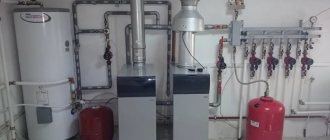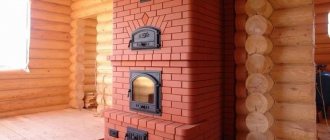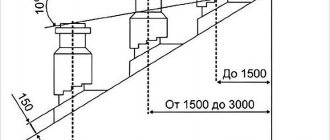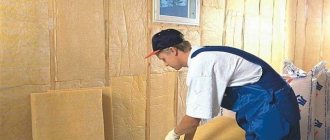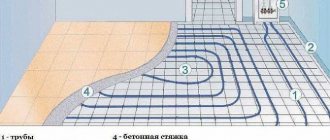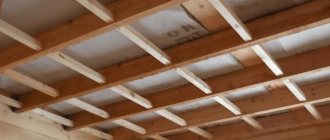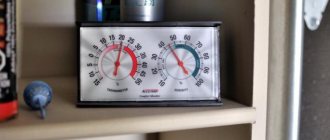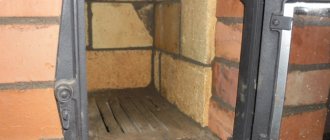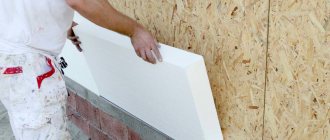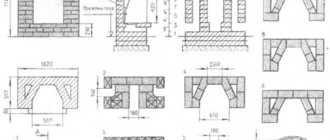- Technological regulations
The location and height of the chimney pipe relative to the roof ridge directly affects the efficiency and safety of using the heating system. If mistakes are made during construction, comfortable operation of the house is simply impossible. That is why it is extremely important to determine the exact value before repair and construction work begins.
General requirements
Today, construction companies offer a huge number of architectural roof solutions. Naturally, all of them are carried out taking into account individual characteristics and prescribed standards. But when determining what height the chimney should be, there are conditions that are met regardless of which project is chosen.
Optimal length and diameter
The chord of the smoke exhaust pipe must be greater than or equal to the Ø of the heating device pipe. Typically, this information is indicated by the manufacturer in the instructions that are attached to other documentation when purchasing a heating device. SNiP identifies the total length of the chimney as 5 meters and its elevation above the upper horizontal rib as 50 centimeters.
These requirements for the minimum height of the chimney pipe above the roof ridge must be observed. Otherwise, the use of the structure will be unsafe.
The smallest value does not have to be the real one. During construction this figure may be increased. In this case, operation is permitted and does not affect the reliability of the pipes, but at the same time the efficiency of the heating system decreases. The difference as a result can change by 20 or even 30%. The indicator is too high to simply ignore it, so during construction it is better to calculate everything in advance or stop at the rise recommended by the manufacturer.
Height above the ridge of a pitched roof
This type of roof requires a particularly careful approach to determining the correct size of the chimney. The fact is that the upper horizontal rib can become an obstacle to the free movement of air masses. Having encountered it, the wind will change its natural direction. As a result, the gas rising from the furnace will not be drawn out. On the contrary, it will return to the room, filling it. To avoid this, it is necessary to be guided by existing regulatory documents.
Diagram for determining the roof slope angle.
SNiP, in turn, prescribe the use of the following rules:
- If the gap between the chimney outlet point and the ridge is no more than 1.5 m in a straight line, then the height of the chimney above the roof should be 0.5 m.
- If the distance is in the range from 1.5 to 3 m, then the maximum point of the pipeline may coincide with the ridge.
- If the interval is more than 3 m, a special calculation is required. It is carried out individually by masters.
Correct sizing will allow you to use the heating system efficiently without creating additional problems.
Influence on the length of the furnace stroke of nearby high-rise buildings
As mentioned earlier, pitched ceilings themselves can become the strongest obstacle to the normal operation of the smoke duct. But besides them, tall buildings located near the house can become such a barrier. They also change the movement of air masses, making it difficult for the smoke to escape normally.
Calculation of the height of the chimney pipe above the roof should be carried out taking into account the surrounding architecture. For this purpose, specially developed schemes are used. It is better to turn to the experts for help. After taking measurements, they will prepare important recommendations.
Where it is not recommended to make a channel for smoke exit
To ensure comfortable and safe use of chimney structures, you should consider some general rules about where it is better not to install them. Among other things, architects advise avoiding installation in the following locations:
- In close proximity to the skylights. These structures themselves are complex and require the use of special fasteners during installation. The chimney can damage them, not to mention the fact that even a weak wind can blow gas waste towards the glass unit. Naturally, in such conditions you will not want to open them.
- On the inner corners of the roof. These areas of the roof are considered the most dangerous and short-lived, and repairs near the chimney are difficult and costly.
- When using several heating systems inside the house at once, it is not recommended to separate their chimneys. It is much more convenient and practical to remove waste through separate channels into a single wide opening. In this case, it is calculated according to an individual project.
Installation of the structure requires careful calculation. It is not always possible to do the work yourself, so it is better to get advice at the design stage.
Briefly about the main thing...
Chimneys can be single- or double-walled. Based on the material of manufacture, metal, brick structures and structures made of sandwich pipes are distinguished. The last option is optimal for private houses. When installing a chimney, the rules for its placement in the room are observed. Its functionality, as well as the presence of draft in the heating equipment, depends on the correct determination of the diameter and height of the structure.
The installation technology through a wooden and brick wall is the same, but there are some nuances: wood is more susceptible to ignition and requires maximum protection. During installation, you must comply with fire regulations, and also take into account possible errors.
Channel requirements
The location of the chimney relative to the ridge is not the only issue during construction. It is important to take into account the recommendations and pay attention to the following:
- The material is selected depending on the fuel the boiler runs on. For a gas, stove or solid fuel unit, a stainless steel pipeline would be a good option.
- The number of heating devices should not exceed two per chimney. Otherwise, there is a high risk of incorrect diameter calculation. When using two heating devices, one type of fuel must be used, and the diameter of the pipes can be no larger than the chord of the chimney itself.
- It is preferable to construct a cylindrical or round pipe. This design allows you to create ideal draft, preventing smoke from returning to the room.
By following these simple rules, you can achieve efficient operation of your heating system.
Why are solid fuel devices considered?
It's simple - there are always more problems with them in these matters compared to gas ones. Let's explain why:
- First of all, gas heating appliances are almost always factory-made products. That is, they must have a pipe of a certain cross-section for connection to the chimney. The cross-sectional area of the channel is also specified in the technical documentation of the model. That is, everything is quite simple - it is not allowed to narrow the channel in any of the sections of the upward chimney.
Factory-assembled boilers or stoves always have a pipe for connecting the chimney. That is, there is no longer a problem with the cross-section of the chimney - it should be no less than that specified in the technical documentation.
- The temperature of the gas combustion products leaving the chimney is disproportionately lower than that generated during the combustion of wood or other solid fuel.
- It is also difficult to compare the volumes of gas mixtures formed during the combustion of “blue” and solid fuels. The difference here is quite significant!
But solid fuel heating devices, stoves or boilers, are very often created independently. Or they are “inherited” from the former owners of the house. And here it is never superfluous to check the parameters of the chimney connected to such a device.
However, what concerns the height of the pipe and checking draft can probably be fully attributed to gas heating equipment. The cross section is known, but it wouldn’t hurt to check the rest.
But let's start with the section.
Distance of the chimney from the ridge
To ensure sufficient draft, it is necessary to correctly calculate where to install the chimney duct. This takes into account the type of roof and the surrounding buildings. The flow of wind passing over the roof is of great importance.
Technological regulations
All rules and requirements for heating are specified in building codes. In particular, specialists are required to:
- The total length of the pipe was at least 5 meters from the grate to the outlet, with the exception of houses with a roofless structure. Otherwise, sufficient traction will not be provided.
- The height of the chimney above the flat roof was at least half a meter.
- The chimney outlet must be located no lower than the line of the top point of the ridge. In this case, it is necessary to maintain an inclination of 10 degrees relative to the horizon.
Graphic and mathematical methods
The most complex calculation option involves the use of this technique. It is usually used when the distance from the pipe to the ridge exceeds 3 m, although other situations also occur.
A couple of tips
When the house has alternative heating, it also requires a chimney. But it is unprofitable to produce different smoke exhaust systems. It is easier to combine them into one, which will connect all the channels made taking into account such parameters as equipment power, amount of smoke and type of fuel. Such structures have a number of advantageous qualities:
- they save living space;
- all systems work stably;
- time, money and labor are saved.
But only specialists can calculate such structures.
Calculation of the parameter taking into account the wind support zone
This is the name given to an area where the air pressure is increased compared to the rest. The air masses here encounter an obstacle, which reduces the traction force of the chimney. In the worst case scenario, the treated gases begin to flow back into the room.
If such a situation arises, calculations must be carried out according to a different scheme. To begin with, a sketch is drawn that takes into account the height of both buildings. Next, the angle between them is determined.
Pipe section
This design parameter is critical to ensuring the efficiency of the heating system. It is determined primarily by the shape of the chimney.
When using a classic cylindrical or round channel, it is enough to follow a simple rule: the cross-section of the pipeline should be proportional to the combustion chamber in the amount of 1 to 10. If a square shape is used during construction, the proportions should be 1 to 1.5.
If the requirements are met, the heat output will be sufficiently effective to ensure proper operation of the stove heating. In this case, the boiler itself will not be overloaded, working at 100%, but without wear.
Important nuances of calculating a chimney
Even with the help of a seemingly simple formula, it is not always possible to achieve the desired result. During construction, it is necessary to take into account several more important details. One of them concerns the diameter of the outlet. If you select it correctly, you can achieve additional advantages:
- Reduce fuel consumption.
- Regulate the operation of the heating system.
- Ensure absolute safety.
When making calculations, it is necessary to take into account the material used and existing ventilation. It depends on them how well the exhaust gas will be removed.
Environmental considerations for industrial buildings
In a word, the throughput of the chimney pipe must ensure the unhindered passage of smoke and its release into the atmosphere. Moreover, the environmental aspect is also important here, namely, whether the products of fuel combustion are properly dispersed in the atmosphere.
Thus, during the construction of commercial and factory enterprises, certain sanitary standards are taken into account. And they depend on the weather conditions of the area, the typical speed of air flow, the topography of the landscape and many other factors.
So, what value did you get and is it exactly equal to 5 meters?
Criteria for determining the height of the chimney above the ridge with a table
There are many conditions that must be taken into account in order to calculate the length of the chimney. Some of them are more important, others less. Here's what you should pay close attention to first:
- Where will the chimney be located relative to the ridge fin?
- What wind rose is typical for the area in which the house is built, how intense the gusts are at different times of the year.
- How much precipitation falls in the region and what form is dominant. Snow, or more precisely, the thickness of its coverage in winter, is of great importance.
- What angle of inclination of the ceiling is planned to be arranged.
- Are there any obstacles near the roof that could change the strength and direction of air flow?
All of these factors should be correlated with the type of fuel that is planned to be used for stove heating and other construction features.
| Distance of the chimney from the vault | Height of the pipe in relation to the roof |
| 150-300 cm | equal to |
| less than 150 cm | 50 cm higher |
| more than 300 cm | is a horizontal line drawn from the ridge and a straight line connecting it to the chimney, forming an angle of 10˚ |
Chimney location and wind direction: how to prevent turbulence
According to all building codes and regulations, the chimney must rise above the roof at a certain distance. This is necessary so that the air on the protruding parts of the roof does not cause reverse draft due to turbulence.
Backdraft can be seen firsthand in the form of smoke that pours from the fireplace directly into the room. But the extra height of the chimney is also not needed, otherwise the draft will become too strong and you won’t get any heat from such a fireplace: the wood will burn to ashes like a match, without having time to give off heat.
This is why it is so important to calculate the height of the chimney as accurately as possible, especially taking into account the direction of the winds in the area:
If the pipe is located too close to dense trees or a high wall, it must be extended with asbestos-cement or steel pipe.
In this video you will also find valuable tips on installing a chimney and solving problems with its height:
What is prohibited to do when assembling a chimney
Some actions when calculating the height and subsequent arrangement of the chimney above the roof are not recommended, so as not to create additional problems or emergency situations.
It is also not allowed to fix the chimney pipe to the rafters. The static position of the pipe is too easy to disturb, for example, when exposed to an intense gust of wind. If the chimney damages the rafters themselves, expensive and extremely difficult repairs will not be avoided. In the worst case, they will be completely destroyed, making it impossible to operate the house.
What parameters need to be calculated
The program for calculating a chimney involves calculating parameters such as:
- height of the chimney duct;
- the diameter of the pipes used for the construction of the chimney (if pipes are used to equip the channel) or calculation of the cross-section of the chimney when it is made of brick;
- determination of optimal traction.
For the installation of an industrial chimney, the specified parameters are not enough. Specialists additionally produce:
- aerodynamic calculation of the chimney;
- calculation of the strength and stability of the structure.
Chimney pipe in a production room
For a domestic chimney installed in private houses, it is sufficient to calculate three main parameters.
Height and cross-section - is there a connection?
The length of the channel and its diameter are directly related. It is their correct ratio that allows you to create sufficient draft to remove gas waste. A smaller chimney helps lower the air temperature, which means the draft force is reduced. On the other hand, a pipe that is too wide also contributes to the rapid cooling of the air flow.
The result of incorrect determination of parameters can be reduced draft, condensation on the surface and the impossibility of normal heating of the room, simultaneously with the removal of harmful substances. Consequently, much more fuel will be consumed in the heating process, and costs will increase significantly.
